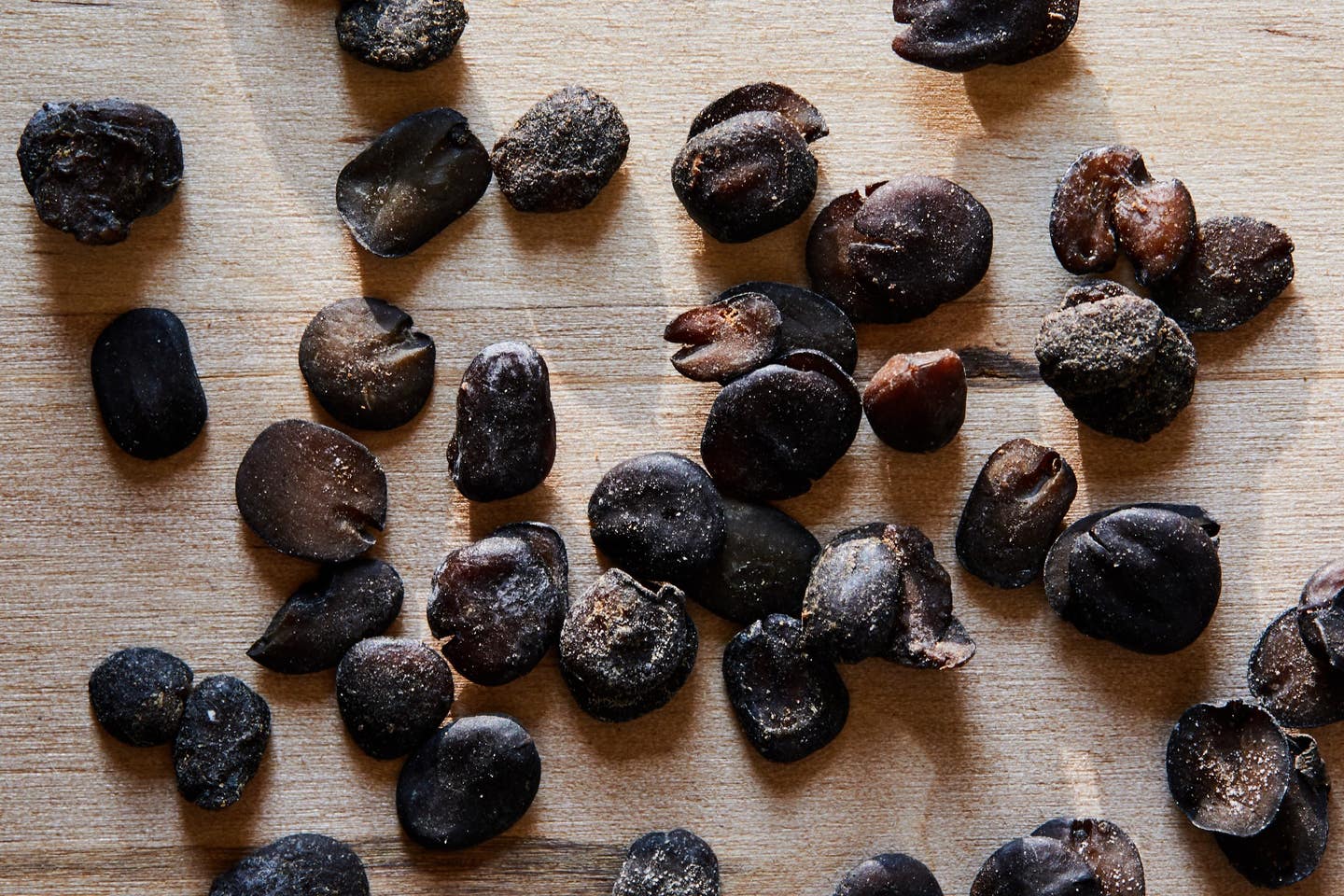
West Africa’s Best-Kept Secret
Iru—fermented locust beans—enrich sweet and savory dishes with richness and umami.
For centuries, iru has been a staple condiment in several Nigerian dishes commonly enjoyed by the country’s Yoruba and Edo people. Over the years, other West African countries have caught on to the ingredient’s rich umami taste. Outside of Nigeria, iru goes by other names, including netetou, kainda, and soumbala, all undeniable references to the fermented seeds of the African locust tree, botanically known as Parkia biglobosa. Its rich essence and complex flavor make it one of the best things to ever happen to African cuisine.
My earliest memory of food is a distinct mix of aromas featuring burning charcoal, iru, and stockfish as my grandmother cooked outdoors in our hometown in Western Nigeria. My mother carried on this custom of using iru, and I will admit that it was not always my favorite—I found the smell too pungent and the taste too sharp. But everything changed with one dish in particular. Iru was the star ingredient in my mother’s efo riro, a traditional Nigerian soup which includes shoko leaves (a leafy local vegetable akin to spinach) and bell peppers. The more I ate it, the more I fell in love with iru’s full-bodied flavor, ever so present in this delicious meal. My mother’s signature dish inspired “Mummy’s Efo riro,” a recipe I shared in my cookbook.
Iru exists in two varieties, fresh and dried, the former of which is more commonly used in Nigeria and characterized by its pungent smell. The latter version is salted and dried to prolong shelf life, then added to liquidy dishes or otherwise hydrated by soaking in hot water for a few minutes to soften. Whatever variety it comes in, iru is our secret for infusing soups, stews, and sauces with a boost of flavor. Because of its punchy smell, iru may not seem immediately appealing, but the magic lies in the taste. Its pungency is slightly reminiscent of cheese, while its thick texture is almost similar to that of chocolate. Its deep umami serves as a flavor enhancer and adds an elusive richness to a wide range of traditional dishes. The highly versatile ingredient adapts easily to savory recipes but can also complement sweet and starchy foods.
Additionally, iru is highly nutritious, rich in healthy fats, carbohydrates, protein, and calcium; Nigerians have long considered it a key element in a wholesome diet. For my recent cookbook, I included it as a key flavoring component in several traditional Nigerian dishes such as ofada—a spicy pepper sauce with succulent chunks of meat—and ewedu— a soup prepared using ewedu leaf, otherwise known as jute or molokhia. Here are some ways you can try cooking with iru in your own kitchen.
Season A Pot of Mummy’s Efo Riro.
Efo riro is a classic Nigerian soup, and my mother’s rendition features lots of seasoned meat (either chicken, oxtail, or goat), as well as shoko leaves, Scotch bonnet and bell peppers, and the signature trio of stockfish, dried crayfish, and palm oil that appears so often in Nigerian cooking. Iru seals the dish by bringing together all of these flavors.
Add Iru to Spicy Soups and Stews.
The richness of iru pairs well with the heat of chiles, so adding a sprinkling to your spicy broths is always a great idea. Try infusing soups and stews—from meat stocks to, say, a spicy chowder—with the flavor of iru. Not only will the beans bring their own complexity to the dish, they will also help balance and heighten the accompanying flavors.
Use Iru as an Aromatic.
Sautéeing aromatics like garlic, ginger, or peppercorns? Toss in some iru at the start of the cooking process. This is an easy and effective way to introduce the ingredient into your cooking which allows its taste to prominently infuse a dish—from stir fries to meat sauces or casseroles. The iru softens with the heat from the pan while emitting an aroma that is second to none.
Enhance Vegetarian Meals With Iru’s Rich Flavor.
The pungent flavor of iru beautifully offsets the starchiness of tubers like sweet potatoes and yams, or of grain-based dishes like fried rice. Drizzle iru-infused sauces over them to introduce both moisture and complexity. Sia Alexander, an African art curator at the gallery Pure_Lagos, recommends iru for amping up vegan protein sources; when blended together with tofu, the dense texture of iru helps produce a tasty ground meat alternative. Or, when preparing sautéed greens like collards or kale, add a teaspoon of iru to spice them up with an extra-savory note. There is so much to try with this special condiment, so don’t miss out!
Tola Akerele is the co-founder of Bogobiri House and author of The Orishirishi Cookbook.
Recipes

Keep Reading
Continue to Next Story










